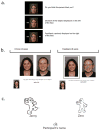Special issue on the teenage brain: Sensitivity to social evaluation
- PMID: 24761055
- PMCID: PMC3992953
- DOI: 10.1177/0963721413476512
Special issue on the teenage brain: Sensitivity to social evaluation
Abstract
Relative to childhood, peer relationships take on a heightened importance during adolescence. Might adolescents be highly attuned to information that concerns when and how they are being evaluated, and what their peers think of them? This review evaluates how continuing brain development - which influences brain function - partially explains or reflects adolescents' attunement to social evaluation. Though preliminary, evidence is mounting to suggest that while processing information relevant to social evaluation and the internal states of other people, adolescents respond with greater emotional intensity and corresponding nonlinear recruitment of socioaffective brain circuitry. This review highlights research findings that relate trajectories of brain development and social behavior, and discusses promising avenues of future research that will inform how brain development might lead adolescents sensitized to social evaluation.
Keywords: Adolescence; brain; development; evaluation; rejection; social.
Figures


References
-
- Barnes GM, Hoffman JH, Welte JW, Farrell MP, Dintcheff BA. Adolescents’ time use: Effects of substance use, delinquency and sexual activity. Journal of Youth and Adolescence. 2007;36:697–710.
-
- Blakemore SJ. The social brain in adolescence. Nature Reviews Neuroscience. 2008;9:267–277. - PubMed
Recommended Readings
-
- Burnett S, Sebastian C, Kadosh KC, Blakemore SJ. The social brain in adolescence: Evidence from functional magnetic resonance imaging and behavioral studies. Neuroscience and Biobehavioral Reviews. 2011;35:1654–1664. In-depth focus on the development of theory of mind and its neural bases. - PMC - PubMed
-
- Crone EA, Dahl RE. Understanding adolescence as a period of social-affective engagement and goal flexibility. Nature Reviews Neuroscience. 2012;13(9):636–650. Rich assessment of the neurodevelopment of cognitive flexibility and social reorientation processes during adolescence. - PubMed
-
- Nelson EE, Liebenluft E, McClure EB, Pine DS. The social re-orientation of adolescence: a neuroscience perspective on the process and its relation to psychopathology. Psychological Medicine. 2005;35:163–174. This early synthesis draws key linkages between adolescent social sensitivity, brain development, and risk for psychiatric illness. - PubMed
-
- Somerville LH, Jones RM, Casey BJ. A time of change: Behavioral and neural correlates of adolescent sensitivity to appetitive and aversive environmental cues. Brain and Cognition. 2010;72:124–133. Presents a hypothesis of how subcortical-cortical interactions in the brain might function uniquely during adolescence, resulting in heightened sensitivity to emotional cues. - PMC - PubMed
Grants and funding
LinkOut - more resources
Full Text Sources
Other Literature Sources
